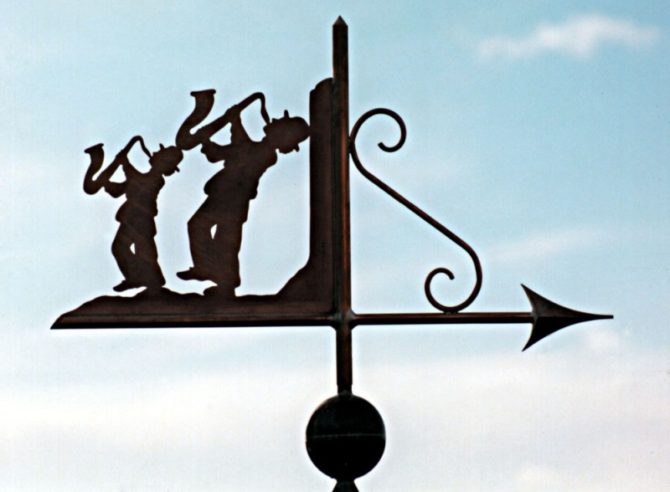Jacques Petit: Girouettier

They seem to top every church steeple in France, the weather vanes that for centuries were crafted in the traditional shape of a rooster. But in fact, weather vanes, or girouettes, also have a rich secular history in France as well. In the Middle Ages they were a symbol of power, and only nobles were allowed to decorate their châteaux with them. When those rules were abolished, weather vanes began to adorn not only the homes of the wealthy, but also shops, inns, farms and artisans’ workshops, often doubling as signs showing the establishment’s specialty. Today, Loire Valley weather vane maker Jacques Petit carries on the tradition of the girouettiers, handcrafting vanes in a huge array of sizes and shapes, and creating custom designs for his clients. In the 1950s, Jacques’ father, Georges Petit, began restoring any weather vanes he came across in the course of his work as a roofer. His son Jacques eventually specialized in girouettes and in 1980 created the Atelier de la Girouetterie as part of the Petit roofing business. To function correctly, weather vanes must be carefully designed, balanced and mounted. The side with the pointer must be smaller, so the wind will blow the larger side away, allowing the pointer to show the wind’s direction. Below the moveable part of the vane, the fixed section has letters indicating the points of the compass.
Today Jacques Petit restores antique weather vanes and also creates new designs in zinc and copper. His stock models include every imaginable subject from animals, boats and mythological figures to professions, sports and scenes from daily life. English speakers interested in buying an authentic French weather vane will be glad to know that they can request that the initial letter for West be W as in English instead of O for Ouest in French. In fact, on request, Petit will also do the compass points in Egyptian hieroglyphs. website
Originally published in the Dec 2009 issue of France Today.
Share to: Facebook Twitter LinkedIn Email



